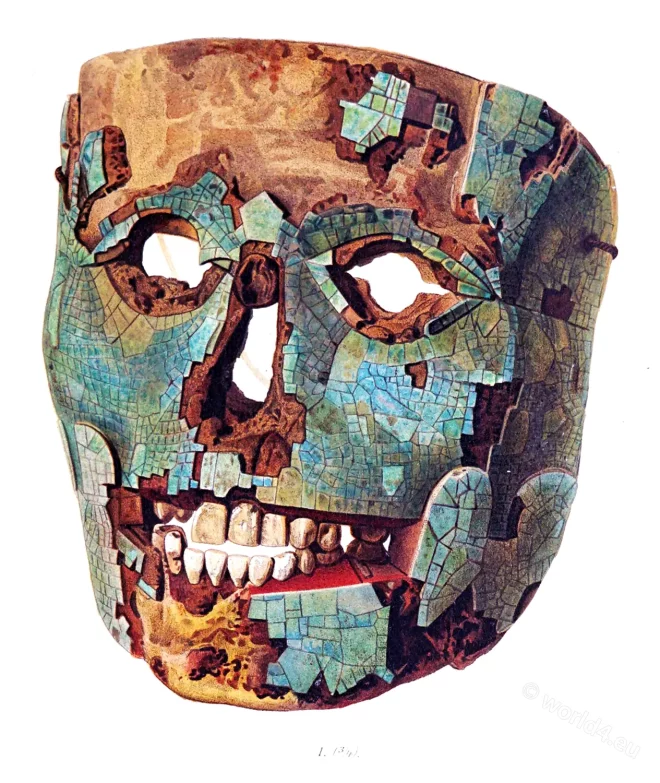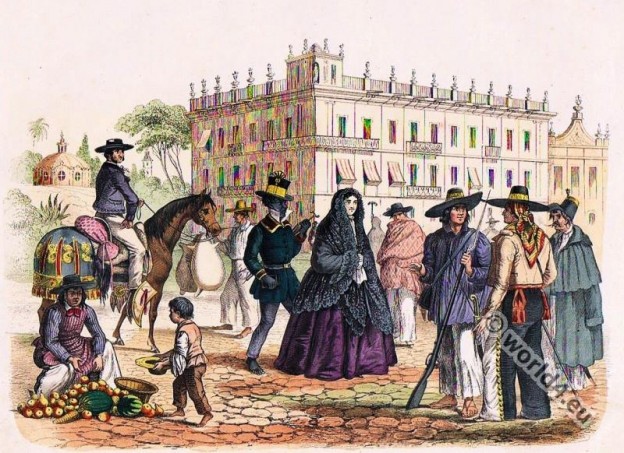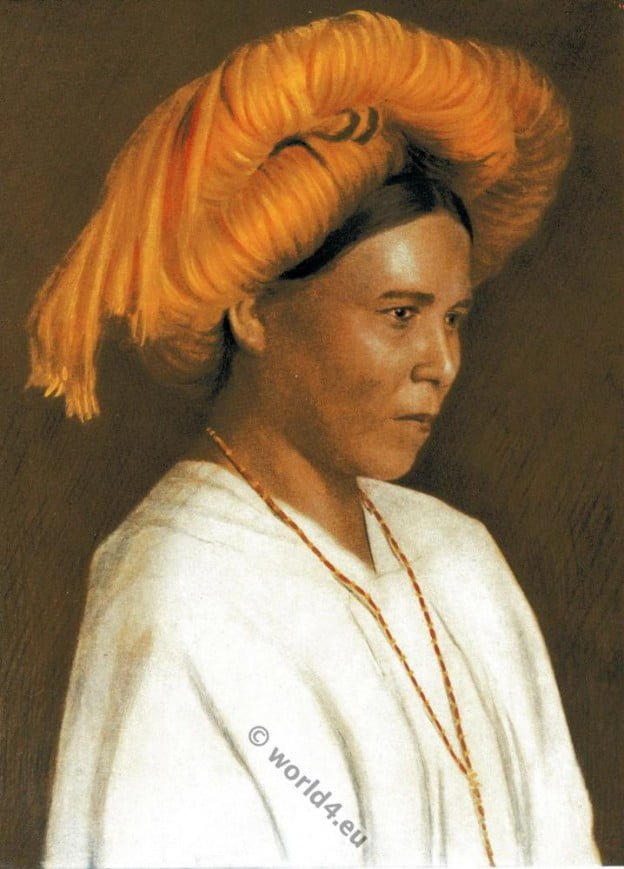Aztec skull mask covered with blue and red mosaic from Mexico.
Category: Mexico
Traditional Mexico folk costumes
Well at Bolonchen, Mexico.
Bolonchen derives its name from two Maya words, Bolon, which signifies “nine,” and Chen, “wells” and it means “the nine wells.”
Public scribe of the main square in Mexico City in the 19th century.
He is reduced to the profession of clerk, and possesses the secret of many households, the thread of many loves, and the secret of many infidelities
Mexican feather head-dresses and the mode of wearing them.
Illustrations of ancient Mexican feather head-dresses and of the mode of wearing them taken from native Manuscripts.
THE story of Catalina de Erauso. The fighting nun.
Catalina de Erauso alias Francisco Loyola who became famous as a soldier, was a Basque noblewoman who lived as a man for several decades (“The nun lieutenant”).
Indigenous of Chapultepec. Around Mexico City 1840.
Mexique No.15, AMÉRIQUE INDIEN DE CHAPULTEPEC (Environs de Mexico). Musée cosmopolite No. 249.
Voltigeur. Infanterie légère d’une compagnie de voltigeurs (Mexique).
Infanterie légère d’une compagnie de voltigeurs (Mexique). The French intervention in Mexico was an intervention of France in the internal affairs of Mexico.
Mexican street scene in 1863.
Mexican street scene in 1863. Costumes of different ethnicities.
Costumes of Mexican Actec at the time of Hernán Cortés.
Costumes of Mexican Aztec 1500 AD. At the time of arrival of the Spaniards led by Hernán Cortés. 1,2. Common women, 3. Priestess, 4. King, 5-8. Warriors, 9. High priest… Read More
A Zapotec woman of South Mexico
A Zapotec woman of South Mexico. The Zapotecs are peoples of Mexico, and inhabiting the Mexican state of Oaxaca in southern Mexico. In pre-Hispanic times the Zapotec were carrier of an advanced… Read More










